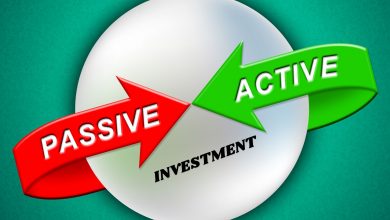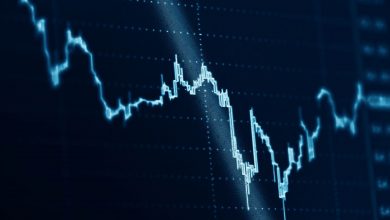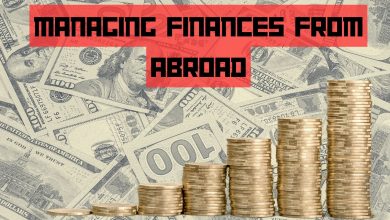Navigating the Waves: Decoding the Best Time to Invest in the Market

Investing in the financial markets is a journey marked by peaks and troughs, highs and lows. One of the perennial questions that investors grapple with is, “When is the best time to invest?” The quest for optimal market entry points is a pursuit that blends art with science. In this blog, we embark on an exploration to decode the elusive answer to the question of the best time to invest in the market.
I. Understanding Market Dynamics: The Ebb and Flow
The financial markets are dynamic and influenced by a multitude of factors, ranging from economic indicators to geopolitical events. Before determining the best time to invest, it’s crucial to grasp the underlying dynamics that drive market movements.
Market Cycles: Markets move in cycles, transitioning between bullish and bearish phases. Recognizing these cycles can provide insights into potential entry points for investors. Bull markets are characterized by rising prices and optimism, while bear markets see declining prices and pessimism.
Economic Indicators: Key economic indicators, such as GDP growth, employment rates, and inflation, play a significant role in shaping market sentiment. Investors often look for signals in these indicators to gauge the overall health of the economy and make informed investment decisions.
II. Long-Term vs. Short-Term Perspective: Investment Goals Matter
The best time to invest varies based on individual investment goals and time horizons. Investors need to distinguish between short-term trading strategies and long-term investment approaches, as market timing can differ significantly between the two.
Long-Term Investing: For those with a long-term perspective, such as retirement planning or wealth accumulation, attempting to time the market perfectly becomes less critical. Dollar-cost averaging, where investors consistently contribute to their portfolios regardless of market conditions, helps smooth out volatility over time.
Short-Term Trading: Active traders, on the other hand, may leverage technical analysis, charts, and market trends to identify short-term opportunities. However, the inherent risk and uncertainty in short-term trading make it a challenging endeavor that requires a deep understanding of market dynamics.
III. Seasonal Trends: Finding Patterns in Time
Seasonal trends in the market have been a subject of interest for investors seeking patterns that may indicate favorable times to enter or exit the market. Certain months or seasons historically exhibit consistent market behaviors, although past performance is not always indicative of future results.
“Sell in May and Go Away”: This adage suggests that investors might consider selling their stocks in May and staying out of the market until November, as historical data has shown weaker performance during the summer months. However, relying solely on historical patterns may not be a foolproof strategy.
Year-End Rally: Some investors anticipate a year-end rally, marked by increased market activity and positive returns. The so-called “Santa Claus Rally” refers to the tendency for the market to rise in the last weeks of December.
IV. Market Valuations: Gauging Opportunity and Risk
Market valuations play a pivotal role in determining the best time to invest. Two commonly used indicators for assessing market valuations are the price-to-earnings (P/E) ratio and the cyclically adjusted price-to-earnings (CAPE) ratio.
Price-to-Earnings (P/E) Ratio: The P/E ratio compares a company’s stock price to its earnings per share. A high P/E ratio may suggest that a stock is overvalued, while a low P/E ratio may indicate undervaluation. Assessing the broader market’s P/E ratio can provide insights into its overall valuation.
Cyclically Adjusted Price-to-Earnings (CAPE) Ratio: The CAPE ratio considers the average earnings over a 10-year period, adjusting for inflation. It provides a more comprehensive view of market valuation and is often used to assess whether the market is overvalued or undervalued.
V. Market Sentiment: Riding the Waves of Emotion
Investor sentiment, often driven by fear and greed, plays a significant role in market movements. Contrarian investors seek to capitalize on extreme sentiment levels by going against the prevailing market sentiment.
Contrarian Investing: Contrarian investors believe that when the majority of market participants are overly optimistic, it may be a signal of an impending downturn, and vice versa. By going against the prevailing sentiment, contrarian investors aim to capitalize on market inefficiencies.
Fear and Greed Index: Some investors use indicators like the Fear and Greed Index, which measures market sentiment based on various factors. Extreme fear may present buying opportunities, while excessive greed may signal a potential market correction.
VI. Global Events: Navigating Uncertainty
Geopolitical events and global economic factors can significantly impact financial markets. Investors need to stay informed about international developments and consider how these events may influence market conditions.
Trade Wars and Political Instability: Trade tensions, political instability, and global conflicts can create volatility in the markets. Investors may need to reassess their portfolios in response to changing geopolitical landscapes.
Global Economic Indicators: Economic indicators from major economies worldwide can influence global markets. Paying attention to indicators such as interest rates, central bank policies, and international trade dynamics can provide insights into potential market movements.
VII. Dollar-Cost Averaging: A Consistent Approach
Dollar-cost averaging (DCA) is an investment strategy that involves consistently investing a fixed amount of money at regular intervals, regardless of market conditions. This approach mitigates the impact of market volatility and eliminates the need to time the market perfectly.
Consistent Contributions: DCA involves making regular contributions to an investment portfolio, such as monthly or quarterly purchases of a fixed dollar amount of a particular asset. This strategy reduces the impact of market fluctuations, as investors buy more shares when prices are low and fewer shares when prices are high.
Risk Mitigation: DCA is a risk mitigation strategy that aligns well with long-term investment goals. It allows investors to participate in the market over time without trying to predict short-term price movements.
VIII. Conclusion: A Holistic Approach to Investing
Determining the best time to invest is an intricate puzzle that involves considering a multitude of factors. Rather than attempting to time the market perfectly, investors may benefit from adopting a holistic approach that combines a clear understanding of their financial goals, risk tolerance, and a diversified investment strategy.
In the ever-changing landscape of financial markets, staying informed, remaining disciplined, and periodically reassessing investment portfolios are key practices for investors. By recognizing that the best time to invest is often aligned with individual circumstances and goals, investors can navigate the waves of market volatility with confidence and resilience.




